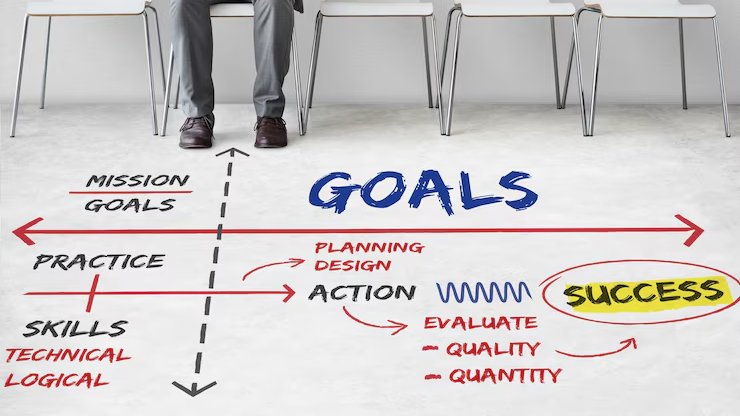
Defining the MVP – Scalable Software Solution for Startups
An MVP, or Minimum Viable Product, is a version of a product with just enough features to satisfy early customers and provide feedback for future product development. This approach allows startups to test their ideas without a large upfront investment. By focusing on delivering a product that addresses the most critical customer needs, startups can quickly assess the potential of their idea. This process helps in identifying the essential features that must be included and those that can be deferred until further validation.
The Strategic Importance of MVPs

The importance of MVPs extends beyond just early testing. They serve as a strategic tool to align the team’s vision with customer needs. By developing an MVP, startups can better understand their market and make informed decisions about future product development. This alignment is crucial in refining the product roadmap, ensuring that subsequent iterations are better tailored to market demands. Moreover, MVPs enable startups to pivot quickly based on real-world data, reducing the risk of costly missteps.
Benefits of MVP Development

- Cost Efficiency: By focusing only on essential features, startups can reduce development costs. This efficiency ensures that resources are allocated effectively, allowing for more flexibility in future development cycles. Additionally, it prevents the team from investing heavily in features that may not resonate with users.
- Rapid Testing: MVPs allow startups to quickly test their product in the market and gather user feedback. This rapid iteration cycle enables startups to refine their offerings based on actual user experiences, leading to a more polished product over time. Quick feedback loops are invaluable in the startup world, where speed can be a critical differentiator.
- Risk Mitigation: Early testing helps identify potential issues before more resources are committed. By identifying and addressing potential pitfalls early, startups can avoid significant setbacks later in the development process. This proactive approach to risk management ensures that startups can adapt and respond to challenges effectively.
The Lean Software Development Approach

Core Principles of Lean Software Development
- Eliminate Waste: Identify and remove anything that does not add value to the customer.
- Build Quality In: Ensure quality at every stage of development to prevent defects.
- Create Knowledge: Use feedback to continually learn and improve the product.
- Defer Commitment: Make decisions based on facts to avoid premature commitments.
- Deliver Fast: Speed up delivery to provide customer value quickly.
- Respect People: Empower the team to contribute ideas and solutions.
- Optimize the Whole: Focus on the entire value stream to improve efficiency.
Implementing Lean in Startups
For startups, lean software development means quickly iterating on ideas and getting products to market efficiently. It aligns with the MVP approach by focusing on delivering core functionalities and refining based on user feedback. Startups can leverage lean principles to streamline their operations and enhance their competitive edge. By adopting a lean mindset, startups can foster a culture of continuous improvement and adaptability, ensuring long-term viability.
Advantages of Lean for Startups
- Resource Optimization: Lean practices help startups make the most of their limited resources by eliminating waste and focusing on value-added activities.
- Enhanced Flexibility: Lean’s emphasis on deferring commitment and rapid iteration allows startups to remain agile and responsive to market changes.
- Improved Team Dynamics: By respecting people and encouraging collaboration, lean development fosters a positive team dynamic.
Strategies for Building Scalable Software

Prioritize Scalability from the Start
- Modular Architecture: Use a design that allows components to be independently updated or replaced.
- Cloud Services: Leverage cloud platforms that offer scalability and flexibility.
- Automated Testing: Implement automated testing to maintain quality while scaling.
- Performance Monitoring: Continuously monitor performance to identify and address bottlenecks.
Selecting the Right Technology Stack
- Community Support: Choose technologies with active communities for better support and resources.
- Compatibility: Ensure the stack is compatible with your long-term goals and other systems.
- Scalability: Opt for technologies that are known for handling increased loads efficiently.
Leveraging Emerging Technologies
- Microservices Architecture: Build applications as a suite of small, independent services.
- Serverless Computing: Run applications without managing the underlying infrastructure.
- Containerization: Use Docker and Kubernetes for scalable, portable applications.
Real-World Examples of Scalable Startup Solutions

Case Study: Dropbox
Dropbox started with a simple MVP that allowed users to share files. By focusing on core functionalities and using cloud technology, they scaled their solution to support millions of users worldwide.
Case Study: Airbnb
Airbnb initially launched with a basic website to test the concept. Through continuous user feedback and lean development practices, they expanded their platform to become a global leader in the hospitality industry.
Case Study: Slack
Slack began as an internal communication tool for a gaming company before pivoting to a broader market. By focusing on user feedback and adopting a flexible architecture, Slack scaled rapidly to become a leading collaboration platform.
Challenges in Building Scalable Software

Resource Constraints
Limited budgets and teams can hinder development efforts. Startups often struggle to allocate sufficient resources to scalability initiatives, impacting their ability to grow effectively.
Rapid Changes
Startups must adapt quickly to market changes, which can affect scalability plans. The dynamic nature of the startup environment requires flexibility in planning and execution.
Technical Debt
Rushing to market can lead to shortcuts that accumulate technical debt, impacting future scalability. Startups must proactively manage technical debt by implementing best practices for code quality, documentation, and system maintenance.
Overcoming Challenges with Strategic Planning

- Focus on Core Features: Prioritize features that deliver the most value to users.
- Invest in Talent: Hire skilled developers who understand scalability challenges and solutions.
- Plan for Growth: Develop a roadmap that anticipates future growth and scalability needs.
- Foster a Culture of Innovation: Encourage a culture that values innovation and experimentation.
Conclusion
Building a scalable software solution is vital for startup success. By leveraging MVP development services, adopting lean software development principles, and planning for scalability, startups can create solutions that grow with their business. With careful planning and execution, startups can navigate challenges and achieve lasting success. Scalability is not just about technology—it’s about creating a flexible, adaptable solution that meets the evolving needs of your customers and business.
Leave a Reply